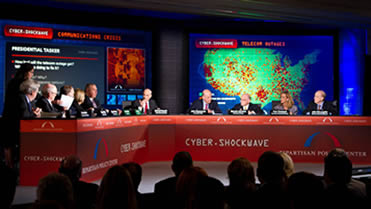Lawmakers warning anyone who will listen about terrorist-based or state sponsored cyber attacks have gained an unexpected source of confirmation; the terrorists themselves.
“This is the clearest evidence we’ve seen that Al Qaeda and other terrorist groups want to attack the cyber systems of our critical infrastructure,” Senator Joe Lieberman said. His remarks were made last week during a session of the Homeland Security and Governmental Affairs Committee.
“Congress needs to act now to protect the American public from a possible devastating attack on our electric grid, water delivery systems, or financial networks, for example,” he said. “As numerous, bipartisan national security experts have said, minimum cybersecurity standards for those networks are necessary to protect our national and economic security.”
 The evidence itself is a video obtained in 2011 by the FBI. In it, Al Qaeda operatives are encouraged to launch cyber attacks that range from sophisticated attacks on critical infrastructure, to generic DDoS attacks on the media and political system. The video was speaking directly to what it called the “covert Mujahidin” and ordering them to commit “electronic jihad.”
The evidence itself is a video obtained in 2011 by the FBI. In it, Al Qaeda operatives are encouraged to launch cyber attacks that range from sophisticated attacks on critical infrastructure, to generic DDoS attacks on the media and political system. The video was speaking directly to what it called the “covert Mujahidin” and ordering them to commit “electronic jihad.”
“They understand that a cyber attack on our critical infrastructure will cause us great harm – possibly more than a traditional physical attack,” commented Senator Susan Collins in a statement.
According to Senator Lieberman’s office and Department of Homeland Security officials, the DHS received more than 50,000 reports of cyber intrusions or attempted intrusions since October last year, an increase of 10,000 reports over the same period the previous year.
Earlier this month, the public learned that DHS officials had issued three warnings since the end of March that the natural gas industry has been under ongoing cyber attack. At the same time, these warnings encouraged the victims to let the attackers in to their networks.
An interesting observation within the video’s content is that it uses the DDoS attacks carried out in 2000 by Mafia Boy (Michael Calce) as an example of how effective they can be.
It also notes that the U.S. is as vulnerable to cyber attack today as the nation’s airline industry was to physical attack in 2001.
Related Reading: A New Cyber Security Model for SCADA
Related Reading: Are Industrial Control Systems Secure?
Related Reading: How to Make the Smart Grid Smarter than Cyber Attackers
Related Reading: The Increasing Importance of Securing The Smart Grid
Related Reading: Stuck on Stuxnet – Are Grid Providers Prepared for Future Assaults?














